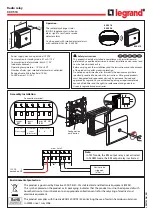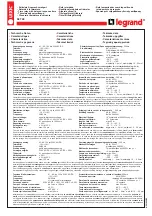
1MRS750886-MUM
37
REU 513
User’s Guide
ABB Substation Automation
Products and Systems
2.1.7.
Serial communication
2.1.7.1.
Communication ports
On the front panel the relay has an optical RS-232 connection through which the
relay is connected to a PC for setting. The front interface uses SPA-bus protocol.
The optical PC-connector isolates the PC from the relay galvanically. The
connection consists of a transmitter stage and a receiver stage. The front connector
is standardized for ABB relay products and requires a specific opto-cable (ABB art.
no 1MKC950001-1). The cable is connected to the serial RS-232C port of the PC
and it is powered by RS-232C control signals. The cable works correctly with baud
rates 4.8 and 9.6 kbps.
The following serial communication parameters shall be used for RS-232C:
•
Number of data bits 7
•
Number of stop bits
1
•
Parity
even
•
Baud rate
9.6 kbps as default
Relay data, such as events, setting values, all input and recorded data, can be read
via the optical PC-interface.
When setting values are altered via the optical PC-interface, the relay checks that the
entered parameter values are within the permitted setting range. The relay refuses to
accept too high or too low a setting value and keeps the former setting unchanged.
2.1.7.2.
Event codes
Special codes have been determined to represent certain events, such as start and
operation of protection stages and different states of output signals. The event codes
can be read via serial communication.
Events E1…E51 are stored in the event register of the relay. The maximum capacity
of the register is 60 events. Under normal conditions the register is empty.
The content of the register can be read with L command 5 events at a time. Using
the L command erases the read events from the register. (An exception to this are
events E50 and E51 that have to be reset with C command.) Should a fault occur, for
example in data communication, these events can be re-read with B command. If
needed, the B command can also be repeated.
Events to be included in event reporting are marked with a multiplier 1. The event
mask is formed by the sum of the weighting factors of all those events that are to be
included in event reporting.
















































